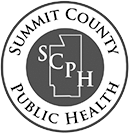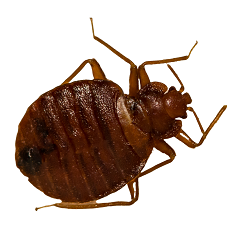I was bitten by an animal now what?
First things first, seek medical attention. From there, the incident should be reported to SCPH so an investigation can be conducted. It’s important to provide as much information as you can to the medical provider so SCPH has no delays in the investigation.
However, there are a few different approaches SCPH takes depending on the type of animal that has bitten you, a family member, or your pet as well as if the animal is still alive or not.
In some cases the animal that has bitten, regardless if it is a domesticated animal or wild, might have died because it was sick, injured or was being put down. In this case, the animal will need to be sent for rabies testing. Call SCPH so you can talk to an Environmental Health Specialist (EHS) and they can discuss the steps that need to be taken so the animal can be tested.
Information for domesticated animal bites:
If someone’s pet has bitten you and you are able to obtain animal owner information, SCPH will be able to issue the animal into a 10 day quarantine that takes place at the pet owner’s home. Quarantine is required regardless if the pet is vaccinated against rabies or not. As long as the animal shows no sign of illness, strange behavior or doesn’t die during quarantine then we know that the transmission of rabies is not a concern.
If the animal is a stray or you were not able to obtain animal owner information, SCPH will not be able to investigate the incident, issue the animal into quarantine, or know if the animal has or has not shown signs of illness, strange behaviors or died. Therefore, SCPH would recommend that you speak with a medical professional about rabies post exposure prophylaxis. It is, however, still important to report the incident. If the animal warden catches the animal, or you are able to obtain animal owner information at a later time, please call SCPH with the information you have and we will start the investigation process.
Information for wild animal bites and bat exposures: Human and Pets
It is not uncommon to find bats in your home. However, depending on the circumstances, there could be a potential risk of rabies infection. If you find a bat in your home and you are sure no human or pet exposure has occurred, confine the bat to a room by closing all doors and windows leading out of the room except those to the outside. The bat will probably leave soon. If not, it can be caught, as described below, and released outdoors away from people and pets.
However, if there is any question of exposure, leave the bat alone and call a nuisance animal trapper for assistance. SCPH cannot assist with capturing the bat. If professional assistance is unavailable, use precautions to capture the bat safely, as described below.
What you will need:
- leather work gloves (put them on)
- small box ,coffee can or plastic container
- piece of cardboard
- tape
When the bat lands, approach it slowly and place a box or coffee can over it. Slide the cardboard under the container to trap the bat inside. Tape the cardboard to the container securely. Contact SCPH as soon as possible to discuss the situation and the next steps for testing.
Humans and pets can be bitten by a wild animal; bat, raccoon, skunk, fox, coyote, etc. If you or your pet have been bitten by a wild animal seek medical treatment right away and also contact SCPH. In some cases the wild animal will be available for testing. If it is, an EHS will be able to discuss the next steps of the testing process. Testing the wild animal is the only way to know if the animal is infected with the rabies virus. If the animal is not available for testing, SCPH will recommend that you speak with a medical professional about the rabies post exposure prophylaxis. If it was your pet that was bitten or exposed, an EHS will ask you questions about your pet’s rabies vaccination status and use the code section in OAC 3701-3-29 (https://codes.ohio.gov/ohio-administrative-code/rule-3701-3-29) to determine when your pet should be vaccinated or boosted with the rabies vaccine and how long quarantine will be for your animal.
It is the weekend and I, a family member, or my pet was bitten or exposed, now what?
You can still call SCPH on the weekends, you will have to leave a message but someone will return your call and be able to talk with you about the next steps. However do not delay medical treatment. If the animal is dead, do not freeze the animal but keep it cool and/or refrigerated.
My pet bit someone, how does quarantine work?
- Pets (dogs, cats, ferrets) involved in a biting incident will be required to complete a 10-day quarantine regardless of your animals’ rabies vaccination status. If the bite was reported, SCPH will contact you by means of a phone call or letter, detailing the quarantine requirements and ways you can submit rabies vaccine information and the quarantine release form.
- For quarantine, the animal does not need to be taken to a shelter, etc. SCPH will not take your pet away. The animal can remain at home as long as it is closely monitored, prohibited from running loose, and does not come into contact with other animals.
- After the 10-day quarantine period, SCPH will follow up with you to check on the status of your pet and collect or remind you to send in any missing information. It is important to return any missed phone calls or to contact SCPH by email. Rabies vaccine information or the quarantine release form can be emailed to: rabies@schd.org
- Upon completion of the 10-day quarantine period, animals that were not currently vaccinated against rabies at the time of the bite or incident must obtain a current rabies vaccination. An animal is not released from quarantine until proof of current rabies vaccine is provided to our office.
I am a medical professional and unsure if my patient should start rabies post exposure prophylaxis (PEP):
The Ohio Department of Health has put together a rabies Post- Exposure Risk Assessment Tool that you can use to help determine if PEP should be started. (https://odh.ohio.gov/know-our-programs/zoonotic-disease-program/rabies-pep)
How can rabies be prevented?
- Teach children never to handle unfamiliar animals, wild or domestic, even if they appear friendly. "Love your own, leave other animals alone" is a good principle for children to learn.
- Wash any wound from an animal thoroughly with soap and water and seek medical attention immediately.
- Have all dead, sick, or easily captured bats tested for rabies if exposure to people or pets occurs.
- Prevent bats from entering living quarters or occupied spaces in homes, churches, schools, and other similar areas where they might contact people and pets.
Be a responsible pet owner by keeping vaccinations current for all dogs, cats, and ferrets, keeping your cats and ferrets inside and your dogs under direct supervision, and consider having your pets spayed or neutered. Call animal control to remove stray animals from your neighborhood.
For more information, download our rabies resources:
Learn more
Don't see what you're looking for? Have more questions? For more information:
Contact us
page updated 10-08-2024


